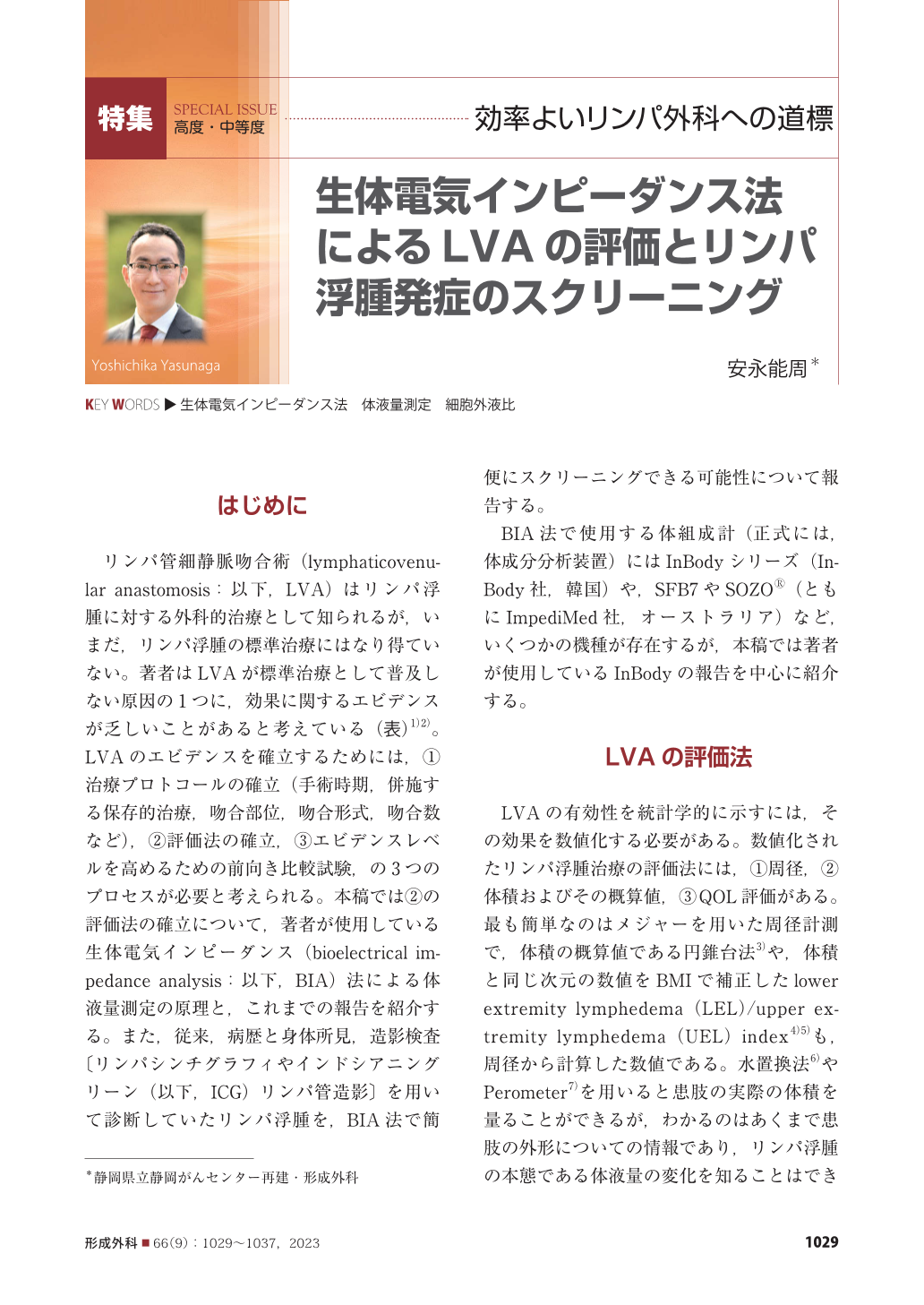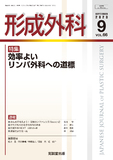Japanese
English
- 有料閲覧
- Abstract 文献概要
- 1ページ目 Look Inside
- 参考文献 Reference
はじめに
リンパ管細静脈吻合術(lymphaticovenular anastomosis:以下,LVA)はリンパ浮腫に対する外科的治療として知られるが,いまだ,リンパ浮腫の標準治療にはなり得ていない。著者はLVAが標準治療として普及しない原因の1つに,効果に関するエビデンスが乏しいことがあると考えている(表) 1)2)。LVAのエビデンスを確立するためには,①治療プロトコールの確立(手術時期,併施する保存的治療,吻合部位,吻合形式,吻合数など),②評価法の確立,③エビデンスレベルを高めるための前向き比較試験,の3つのプロセスが必要と考えられる。本稿では②の評価法の確立について,著者が使用している生体電気インピーダンス(bioelectrical impedance analysis:以下,BIA)法による体液量測定の原理と,これまでの報告を紹介する。また,従来,病歴と身体所見,造影検査〔リンパシンチグラフィやインドシアニングリーン(以下,ICG)リンパ管造影〕を用いて診断していたリンパ浮腫を,BIA法で簡便にスクリーニングできる可能性について報告する。
BIA法で使用する体組成計(正式には,体成分分析装置)にはInBodyシリーズ(InBody社,韓国)や,SFB7やSOZO Ⓡ(ともにImpediMed社,オーストラリア)など,いくつかの機種が存在するが,本稿では著者が使用しているInBodyの報告を中心に紹介する。
A bioelectrical impedance analysis is a useful method for assessing the effectiveness of lymphedema treatment and the development and severity of lymphedema. The body water volume and composition at each of the following five segments of the body can be calculated by measuring their impedance values: right and left arms, trunk, and right and left legs. The effectiveness of lymphedema treatment can be evaluated by measuring the reduction in the volume of body water in the affected limb after treatment. The severity of lymphedema can be easily ascertained by using the excess volume of body water as an indicator for unilateral cases and by using the extracellular water ratio(%ECW)values for bilateral cases. Measuring %ECW values also provides high accuracy in screening for the development of lymphedema without the need for invasive and time-consuming contrast imaging studies.

Copyright© 2023 KOKUSEIDO CO., LTD. All Rights Reserved.


